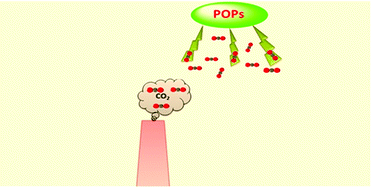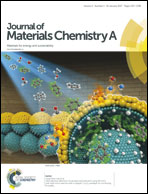Carbon dioxide capture in amorphous porous organic polymers
Abstract
The sharply rising level of atmospheric carbon dioxide resulting from anthropogenic emissions is one of the greatest environmental concerns nowadays. Capture and storage of carbon dioxide (CCS) from coal- or gas-burning power plants is an attractive route to reducing carbon dioxide emissions into the atmosphere. Porous organic polymers (POPs) have been recognized as a very promising candidate for carbon dioxide capture due to their low density, high thermal and chemical stability, large surface area, tunable pore size and structure, and facilely tailored functionality. In this review, we aim to highlight the POPs for CO2 capture and summarize the factors influencing CO2 capture capacity, such as surface area and pore structure, swellable polymers, heteroatomic skeleton and surface functionalized porous organic polymers.

- This article is part of the themed collection: Recent Review Articles


 Please wait while we load your content...
Please wait while we load your content...